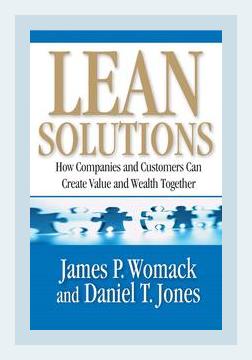Entrepreneurship and StartupsLean Startups
Introduction
“Lean Solutions,” authored by James P. Womack and Daniel T. Jones in 2005, builds upon the principles of Lean Thinking, primarily applied in manufacturing, and extends these concepts to the realm of customer interactions and the delivery of services. The authors argue that many companies still operate in ways that are wasteful and frustrating for their customers. By adopting Lean principles, businesses can create more value for consumers and reduce inefficiencies. Throughout the book, Womack and Jones provide compelling examples, actionable insights, and practical applications of Lean principles.
1. The Concept of Lean Consumption
Main Point
Lean consumption aims to optimize the customer’s time and resources by removing waste from the consumption process. The authors assert that consumers often waste significant amounts of time dealing with inefficient service systems.
Action
Identify and map the entire consumption process to find areas of waste and implement strategies to streamline these processes.
Example
The book discusses how Toyota transformed the car-buying experience. Traditionally, purchasing a vehicle involved multiple visits to the dealership. Toyota revamped this process by setting up “Toyota Direct” to ensure that customers complete the purchase in one visit, significantly cutting down on wasted time.
2. Solving Customer Problems Completely
Main Point
Complete problem-solving is about addressing customer needs comprehensively and not just meeting the immediate demands.
Action
Develop a deeper understanding of customer problems and design solutions that fully resolve these issues, focusing on the root cause rather than symptomatic solutions.
Example
Womack and Jones reference Best Buy’s “Geek Squad.” Instead of just selling products, Geek Squad offers to resolve technology-related issues in a customer’s home, ensuring the consumer’s overall problem is solved.
3. Eliminate Waste and Discover Value
Main Point
Waste often exists in the form of redundant steps, waiting times, and unnecessary movements that add no value to the customer.
Action
Conduct a value stream mapping exercise to identify non-value-adding steps and remove them to enhance process efficiency.
Example
The authors highlight the banking industry, where traditional processes required customers to fill out multiple forms for simple transactions. Lean principles simplified these processes by enabling online platforms where forms are pre-filled and transactions are streamlined, reducing redundancy and waiting times.
4. Make Services Flow
Main Point
Just as in manufacturing, services should flow without interruptions. Bottlenecks and slowdowns must be identified and removed to achieve seamless service delivery.
Action
Implement continuous flow mechanisms and reduce batch processing in service industries by breaking down complex processes into simpler, manageable steps.
Example
The airline industry is cited where check-in processes used to be cumbersome. Implementing online check-ins and automated kiosks has significantly reduced the waiting time at airports, streamlining the flow of passengers.
5. Let Customers Pull Value
Main Point
Allowing customers to pull value ensures that they receive goods and services exactly when they need them and not based on a pre-defined schedule that may not suit their requirements.
Action
Develop systems that enable customers to trigger the next steps in a process rather than following a rigid schedule that might lead to overproduction or stockpiling.
Example
Dell Computers utilized a build-to-order system where customers could configure their PCs and have them built and delivered quickly, ensuring that they got what they wanted without excess inventory.
6. Continuous Improvement
Main Point
Continuous improvement (Kaizen) should be a perpetual effort involving every employee in the organization to make small, incremental changes that enhance the overall process.
Action
Create a culture of continuous improvement by encouraging employee involvement at all levels to suggest and implement improvements.
Example
The authors discuss how Zara, the fashion retailer, empowers its employees to contribute ideas that speed up the design-to-shelf process, enabling them to react quickly to fashion trends and maintain a competitive edge.
7. Optimizing the Lean Ecosystem
Main Point
Lean thinking should extend beyond individual companies to the entire value chain, including suppliers, partners, and customers, creating a lean ecosystem.
Action
Collaborate with partners and stakeholders to extend Lean principles across the value chain, ensuring that improvements benefit the entire network and not just isolated parts.
Example
Toyota’s collaboration with its suppliers under the Just-In-Time (JIT) system ensured that parts arrived exactly when needed, creating a highly synchronized and efficient supply chain that minimized inventory and reduced waste.
8. Customer Focused Solutions
Main Point
Truly understanding and focusing on the customer ensures that solutions are designed to meet their real needs and preferences, rather than imposing what the company thinks they need.
Action
Adopt methods like Customer Journey Mapping and Voice of the Customer (VoC) to gain insights into customer experiences and preferences.
Example
Amazon’s recommendation engine is an example where the company uses data on past purchases and browsing behavior to predict what customers might need next, providing a personalized shopping experience.
9. Lean Transformation and Organizational Change
Main Point
Implementing Lean principles often requires a significant cultural transformation within the organization. Leadership must drive this change and ensure that all employees are aligned with the Lean vision.
Action
Conduct workshops and training sessions to educate employees about Lean principles and create an action plan to gradually shift the organizational culture towards Lean thinking.
Example
The authors detail how Danaher Corporation successfully transformed its operations by implementing the Danaher Business System (DBS), a comprehensive Lean transformation program that involved extensive training and a clear strategic vision.
Conclusion
“Lean Solutions” by James P. Womack and Daniel T. Jones provides a comprehensive guide on applying Lean principles to enhance customer value and reduce waste in service delivery. The actionable insights and concrete examples in the book serve as practical advice for organizations striving to adopt a customer-centric, efficient approach. Emphasizing continuous improvement, complete problem-solving, and a shift in organizational culture, the authors present a compelling case for Lean transformation across various industries. By understanding and implementing these Lean principles, businesses can create streamlined processes that offer significant value to their customers.
